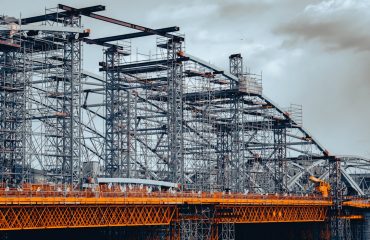body {
font-family: sans-serif;
line-height: 1.6;
}
h1, h2, h3 {
color: #333;
}
Cogeneration systems, also known as combined heat and power (CHP) systems, are marvels of energy efficiency, producing both electricity and usable heat from a single fuel source. While the intricate engineering and sophisticated controls often take center stage, a less glamorous but equally critical component ensures the system’s longevity and performance: steel. This post delves into the vital role of steel in cogeneration systems, exploring its selection, properties, and challenges.
1. Steel Grades for Cogeneration: A Material Selection Guide
The choice of steel for cogeneration components is far from arbitrary. It depends heavily on the specific application, operating temperature, and the presence of corrosive agents. Common steel grades used include:
- Carbon Steel: While cost-effective, carbon steel’s suitability is limited to lower-temperature applications and environments with minimal corrosion risks. Its strength and weldability make it suitable for certain structural components.
- Low Alloy Steels: These steels offer improved strength and corrosion resistance compared to carbon steel, making them suitable for a wider range of cogeneration applications. Elements like chromium, molybdenum, and nickel enhance their performance.
- Stainless Steels: For high-temperature and corrosive environments, particularly those involving steam and combustion byproducts, stainless steels are indispensable. Austenitic stainless steels (like 304 and 316) are popular due to their excellent corrosion resistance and high-temperature strength. Ferritic and martensitic stainless steels offer even greater strength but may have limitations in weldability.
- Heat-Resistant Steels: In high-temperature sections like boiler tubes and pressure vessels, heat-resistant steels are crucial. These alloys are engineered to withstand creep, oxidation, and scaling at elevated temperatures, ensuring the system’s structural integrity.
Selecting the appropriate steel grade requires careful consideration of the system’s operating parameters and potential environmental factors. Consultations with materials engineers are often necessary to optimize performance and longevity.
2. Corrosion Resistance: Protecting the Heart of Cogeneration
Cogeneration systems operate in harsh environments. Exposure to steam, combustion gases, and potentially aggressive chemicals necessitates the use of corrosion-resistant steels. Corrosion can lead to leaks, reduced efficiency, and even catastrophic failures. The selection of steel grades with inherent corrosion resistance, or the application of protective coatings, is vital.
Stainless steels, especially those containing chromium and molybdenum, form a passive oxide layer that protects against corrosion. However, the effectiveness of this layer can be compromised by certain environmental conditions, such as high chloride concentrations. In such cases, more specialized alloys or protective coatings may be required.
Regular inspections and maintenance are crucial to detect and address corrosion early on. This includes visual inspections, non-destructive testing (NDT) techniques, and potentially chemical analysis of the system’s fluids.
3. High-Temperature Properties: Withstanding the Heat
Many components within a cogeneration system operate at elevated temperatures, often exceeding several hundred degrees Celsius. At these temperatures, steel undergoes changes in its mechanical properties, including reduced strength and increased creep (slow deformation under sustained stress). Therefore, the selection of steel must prioritize high-temperature strength and creep resistance.
Heat-resistant steels, specifically designed for high-temperature applications, are crucial for components like boiler tubes, superheaters, and headers. These steels often contain elements like chromium, molybdenum, vanadium, and tungsten, which enhance their high-temperature strength and oxidation resistance. Careful consideration must be given to the specific temperature range and the expected stresses on the components.
4. Weldability and Fabrication: Building a Robust System
Cogeneration systems are complex assemblies requiring extensive welding and fabrication. The chosen steel grade must exhibit good weldability to ensure the integrity of the welds. Poor weldability can lead to defects, weakening the system and potentially causing failures. The selection process often involves considering the weldability of the chosen steel grade, the welding processes to be employed, and the necessary post-weld heat treatments.
For stainless steels, specialized welding techniques and filler materials are often required to prevent weld decay and maintain corrosion resistance. Proper welding procedures, qualified welders, and rigorous quality control are essential to ensure the reliability and safety of the cogeneration system.
5. Cost and Lifecycle Considerations: Balancing Performance and Economics
While the performance and longevity of the steel components are paramount, cost considerations are also important. The initial cost of the steel, along with the fabrication and installation costs, must be balanced against the potential long-term benefits of using a higher-grade, more durable material. A lifecycle cost analysis, considering maintenance, repairs, and potential downtime, can help optimize the selection process.
Choosing a higher-grade steel might result in a higher initial investment, but it could lead to significant cost savings over the system’s lifespan due to reduced maintenance and longer operational life. This analysis should also account for the energy efficiency gains associated with a well-designed and robust cogeneration system.
In conclusion, the selection of steel for cogeneration systems is a critical decision impacting the system’s efficiency, safety, and longevity. A thorough understanding of the operating conditions, the properties of different steel grades, and the economic considerations is essential for making informed decisions. Consulting with materials engineers and experienced cogeneration system designers is highly recommended to ensure optimal performance and minimize risks.
Tags: cogeneration steel, cogeneration systems, steel grades, corrosion resistance steel, heat resistant steel, combined heat and power, CHP steel




